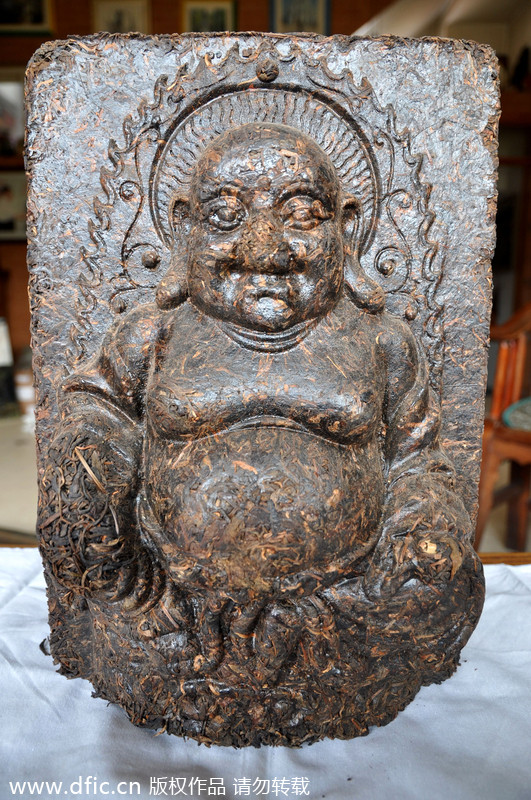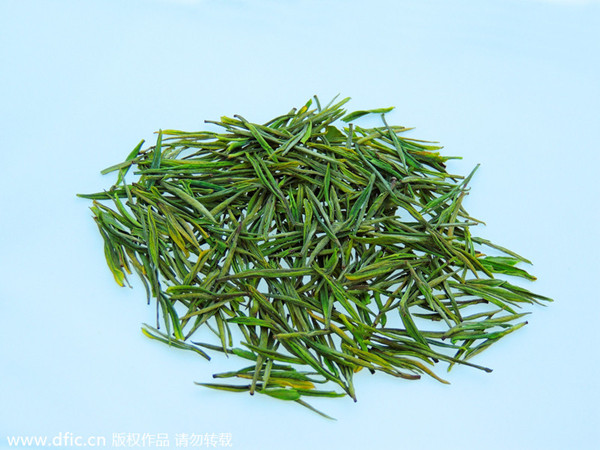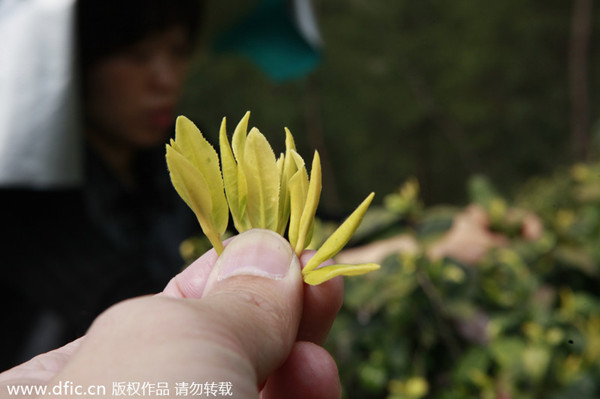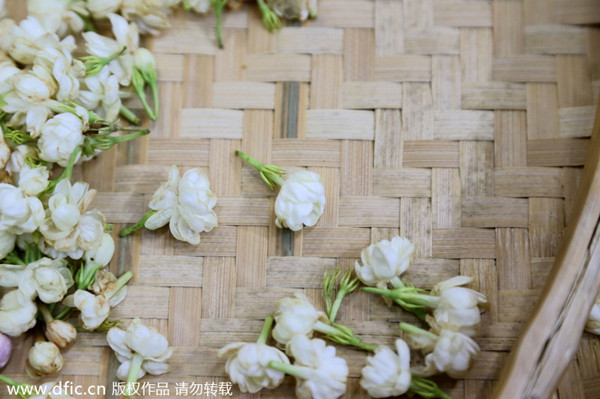Culture insider: 7 types of Chinese tea you must know
( chinadaily.com.cn )
Updated: 2014-05-28
Pu'er tea
Pu'er tea is grown in southern Yunnan province. The tea is famous for its health benefits, history and post-fermentation characteristics. Pu'er has both "raw" and "cooked" varieties. The raw version exhibits a green color and matures over a number of years. The cooked variety is black in color and has an earthy flavor.
 |
|
Pu’er tea in the shape of the Buddha collected by Zhi Chunchen, resident from Handan, Hebei province, September 3, 2013.[Photo/IC] |
White tea
Not as popular as other varieties, but good alternatives are Silver Needle and White Peony, and a white tea from Yunnan, a fermented white tea cake and white tea bricks. It contains a greater number of antioxidants than other teas.
 |
| White tea leaves from Anji county, Zhejiang province.[Photo/IC] |
Yellow tea
Nowadays, yellow tea is only found in a few locations in China, mainly because it is difficult to process. Only three varieties are well known: Meng Ding from Sichuan province, Junshan Silver Needle from Hunan and the Huoshan Yellow Buds from Anhui. Both the leaves and the brewed tea are yellow-green in color. The taste is fresh, with a slight hint of pepper.
 |
|
Yellow tea leaves plucked in Jinyun county, Zhejiang province, March 18, 2013.[Photo/IC] |
Scented teas
Scented teas are made by combining high quality tea leaves with the fragrances and tastes of blossoms, for example, jasmine or pomelo flowers.
 |
|
Jasmine flowers, a main ingredient of jasmine tea, at the 16th Cross-Straits Fair for Economy and Trade in Fuzhou, Fujian province, May 19, 2014.[Photo/IC] |



